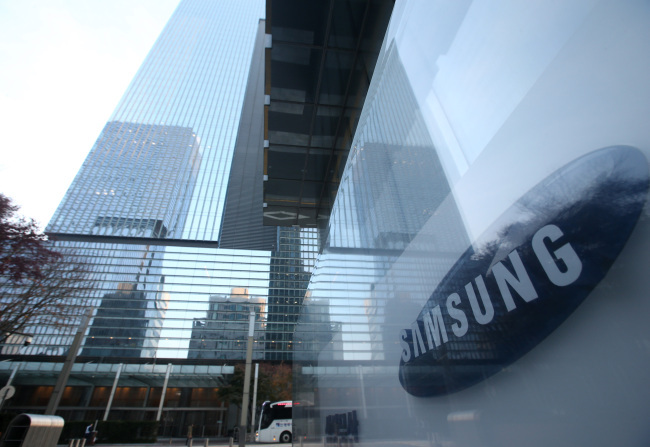[
THE INVESTOR] South Korea’s top five conglomerates have grown even bigger in terms of assets they hold and revenue they produce in the past three years, but their contribution to creating new jobs is lagging, a report showed Sunday.
According to conglomerate tracking research firm Chaebul.com, the combined assets of the top five largest companies -- Samsung,
Hyundai Motor, SK, LG and Lotte -- recorded about 930 trillion won ($817 billion) last year, a 15.5 percent rise from 2012. This accounted for 60 percent of the total assets of the top 30 largest companies in Korea, jumping 3 percent compared to three years ago. The top 30 groups excluded state-run firms.
 |
Samsung Group headquarters in Seoul |
By groups, the assets of Samsung recorded 348 trillion won, which proportion in the 30 groups grew by nearly 1 percentage point to 22.5 percent last year.
Hyundai Motor’s proportion also increased by about 2 percentage points to 13.6 percent as its assets increased from 166 trillion won to 209 trillion in the past three years.
The top five groups also expanded their influence in sales and net profits among the 30 conglomerates.
While their total combined sales fell from 800 trillion won to 760 trillion in the past three years due mainly to the global recession, their proportion of sales among the 30 groups rose by about 4 percentage points to 61.5 percent.
Their proportion in the net profit also surged by 12 percentage points to 95.1 percent.
Meanwhile, the combined sales of the rest of the 25 large companies dropped to 477 trillion won, along with a 3.5 percent decline in the proportion to 38. 5 percent.
Their net profit also plummeted from 10.4 trillion to 2.5 trillion won, leading to the proportion to drop from 16.8 percent to 4.9 percent.
While the assets, sales and net profit of the top five conglomerates expanded, their contribution to employment has not grown proportionally.
Since 2012, the top five companies have increased their workforce by 5.1 percent. The employment proportion of these groups remained at 57.7 percent out of the total top 30 companies, the same as 2012.
The employment figure of the rest of the 25 groups, meanwhile, jumped by 5.2 percent, making their increase rate slightly higher than the top five groups.
By Lee Hyun-jeong / The Korea Herald (
rene@heraldcorp.com)








![[Today’s K-pop] Blackpink’s Jennie, Lisa invited to Coachella as solo acts](http://res.heraldm.com/phpwas/restmb_idxmake.php?idx=644&simg=/content/image/2024/11/21/20241121050099_0.jpg)